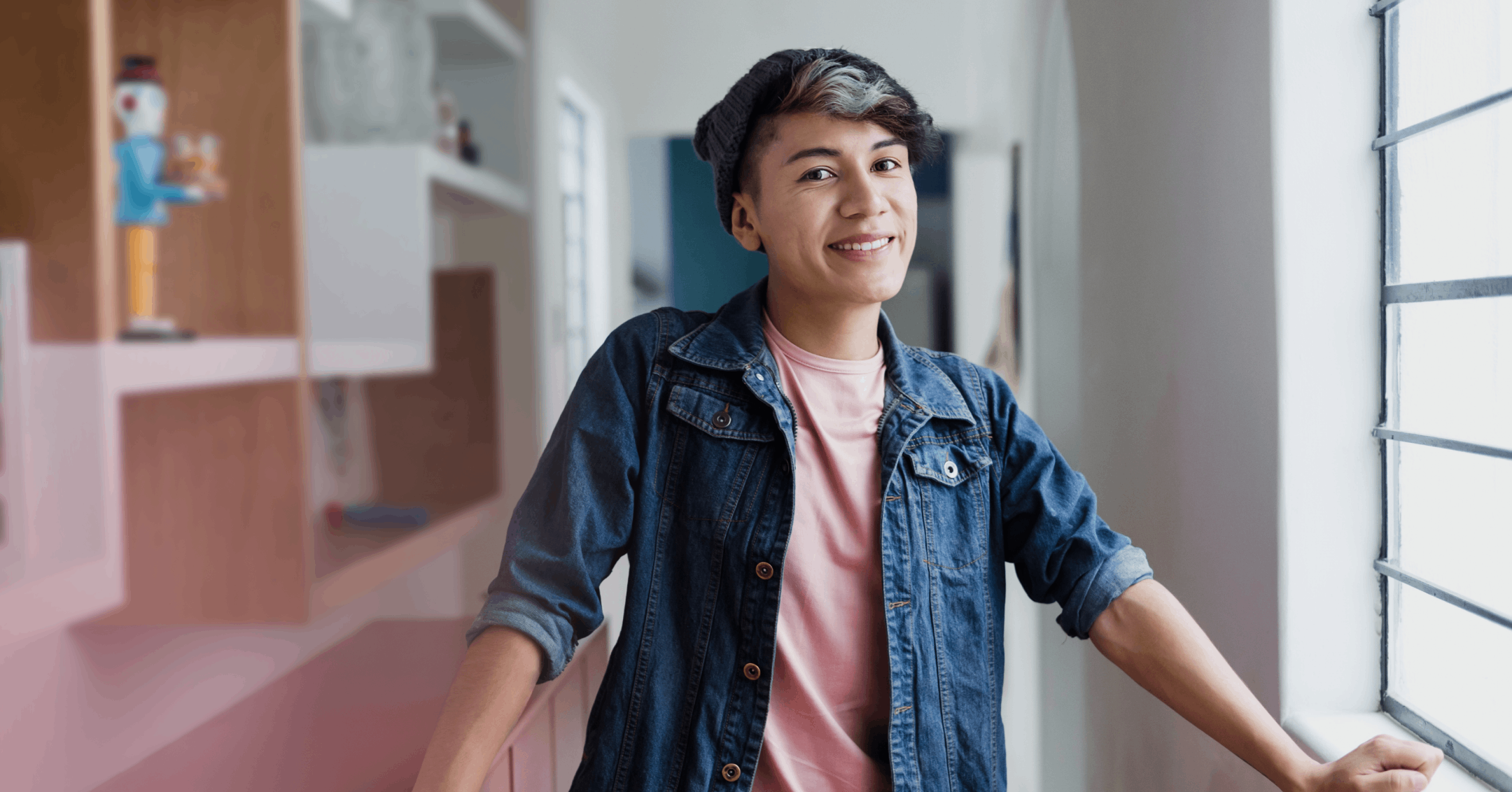You can build healthy relationships when you have borderline personality disorder (BPD) by fostering self-awareness, communication skills, and coping strategies.
Understanding emotional triggers and relationship patterns can help you create more stability and reduce distress.
Therapy can provide support in managing emotions, improving communication, and strengthening relationships.
Dating with BPD can feel overwhelming at times, but having borderline personality disorder (BPD) doesn’t mean you can’t have healthy and fulfilling relationships. Many people with BPD wonder, “Should people with BPD date?” The answer is yes, if it feels right to you. While BPD can bring challenges, self-awareness and coping skills can help you build meaningful connections.
Intense emotions and BPD relationship triggers — like fear of abandonment — may affect relationships, but they don’t make love impossible. With therapy, open communication, and support, you can navigate dating in a way that feels safe and fulfilling.
What it can be like to date with BPD
Dating with BPD can be a deeply emotional experience filled with both intense connection and moments of distress. Relationships may bring excitement and love but also fear of abandonment or sudden shifts in feelings. Understanding how BPD may affect relationships can help you navigate challenges and build healthier connections.
Intense highs and lows
People with BPD often experience relationships in extremes. One moment, a partner may feel like the most important person in the world, and the next, fear or doubt may take over. This pattern can create emotional distress for both partners.
Common experiences may include:
Feeling an intense connection early in the relationship, which could lead to love bombing
Experiencing sudden fears of rejection or abandonment
Struggling with black-and-white thinking, where a partner is seen as all good or all bad
Having strong emotional reactions to perceived criticism or distance
Recognizing these patterns can help you create more stability and reduce distress in your relationships.
Triggers in BPD relationships
Certain situations may trigger strong emotional reactions, making it difficult to feel secure in a relationship. Even small misunderstandings can lead to overwhelming feelings of sadness, anger, or fear for someone with BPD.
Some common BPD relationship triggers may include:
A partner not responding to a text or call right away
Changes in plans or routines that feel unexpected
A perceived lack of attention or affection from a partner
Feeling criticized, even if that wasn’t the other person’s intention
Learning to identify and manage triggers can help you build a sense of safety and trust in your relationships.
The BPD relationship cycle
Many people with BPD notice repeating patterns in their relationships. These cycles can contribute to emotional ups and downs and make it difficult to maintain stability.
The BPD relationship cycle may include:
Idealization: Feeling deeply connected and putting a partner on a pedestal
Fear of abandonment: Worrying about losing the relationship, which can sometimes lead to intense emotions or impulsive actions
Conflict or withdrawal: Struggling with trust, miscommunication, or overwhelming emotions
Reconnection or restarting the cycle: Making up, followed by a return to intense closeness
Recognizing this cycle can help people work toward breaking patterns and creating more balanced, secure relationships.
When two people with BPD date
When both partners have BPD, emotions can feel even more intense, and both people may experience similar fears and triggers. However, this also means there’s potential for deep understanding and mutual support.
Some challenges and strengths of two people with BPD in a relationship may include:
Challenges: Increased emotional reactivity, difficulty with boundaries, and conflicts fueled by fear of abandonment
Strengths: A shared understanding of emotional struggles, deep empathy, and the opportunity to support each other’s growth
Building a healthy relationship requires self-awareness, communication, and individual coping strategies. With effort and mutual support, meaningful and stable relationships are possible.
The care you need, when you need it
Learn how Rula can support your mental health journey
Ways to manage BPD’s impact on your relationship
BPD can make relationships feel intense and unpredictable, but that doesn’t mean they can’t last. While emotional regulation and fear of abandonment can create challenges, self-awareness, communication, and coping skills can help build strong, healthy connections.
Strategies for building healthy relationships
While every relationship is different, some strategies can help strengthen your connection and create more stability. These include:
Practicing self-awareness: Recognizing how your emotions and reactions affect your relationship can help you respond thoughtfully rather than impulsively.
Developing healthy communication skills: Expressing feelings clearly, listening to your partner, and setting boundaries can prevent misunderstandings and conflict.
Using coping strategies: Skills from therapy, like distress tolerance and emotional regulation, can help you manage overwhelming feelings without taking them out on your partner.
Building a strong support system: Having trusted friends, family, or a therapist to lean on can provide reassurance and guidance when relationship stress feels overwhelming.
Steps to take when BPD impacts your relationship
If you notice your mental health impacting your relationship, there are ways to address it:
Pause before reacting. If you feel triggered, take a moment to breathe and reflect before responding to your partner.
Communicate your needs. Let your partner know how you’re feeling and what support would help, rather than expecting them to guess.
Seek professional support. Therapy — either individually or as a couple — can help you navigate challenges and build healthier relationship patterns.
Prioritize self-care. Managing BPD symptoms through routines, relaxation techniques, and personal goals can improve both your well-being and relationship.
With effort, support, and the right tools, it’s possible to build and maintain a fulfilling, long-term relationship while living with BPD.
Professional support for dating with BPD
Dating with BPD can feel complicated, but professional support can make a big difference. If you or your partner has BPD, therapy can help you understand your emotions, build relationship skills, and manage the fears that may come up in dating. A therapist can also help you recognize patterns in your relationships and develop healthier ways to connect with your partner.
How can therapy help?
Therapy gives you a supportive space to explore your feelings and learn tools for navigating relationships. It can help you manage intense emotions, reduce impulsive reactions, and improve communication with your partner.
If you experience fears of abandonment or trust issues, a therapist can guide you in creating more security in your relationships. Therapy isn’t about changing who you are. Rather, it’s about giving you the skills to build relationships that feel safe and fulfilling.
Types of therapy that can help
Different types of therapy can support you in dating when you have BPD. Some helpful approaches include:
Dialectical behavior therapy (DBT): DBT is specifically designed for BPD and helps with emotional regulation, distress tolerance, and relationship skills. It can teach you how to manage intense emotions without letting them take over.
Cognitive behavioral therapy (CBT): CBT can help you challenge unhelpful thoughts and behaviors that might impact your relationships. It encourages healthier ways of thinking and responding to relationship challenges.
Couples therapy: If you’re in a relationship, couples therapy can help you and your partner build better communication, set boundaries, and strengthen your connection.
For many people with BPD, relationships feel especially important because they often long for closeness and fear being abandoned. Feeling truly seen and valued in a relationship can be deeply healing.

Brandy Chalmers, LPC
Clinical reviewer
Find care with Rula
Having BPD doesn’t mean you can’t have healthy relationships. Self-awareness, communication, and coping skills can help. Recognizing triggers and patterns can create more stability, and therapy offers support in managing emotions and building secure connections.
At Rula, we’re committed to delivering a comprehensive behavioral health experience that helps people feel seen and understood so they can get back to feeling their best.
Rula makes it easier to find a licensed therapist or psychiatric provider who accepts your insurance so you don’t have to choose between affordable care and excellent care. With a diverse network of more than 15,000 providers, 24/7 crisis support, and appointments available as soon as tomorrow, we’re here to help you make progress — wherever you are on your mental health journey.
Rula's editorial process
Rula's editorial team is on a mission to make science-backed mental health insights accessible and practical for every person seeking to better understand or improve mental wellness.
Members of Rula’s clinical leadership team and other expert providers contribute to all published content, offering guidance on themes and insights based on their firsthand experience in the field. Every piece of content is thoroughly reviewed by a clinician before publishing.



